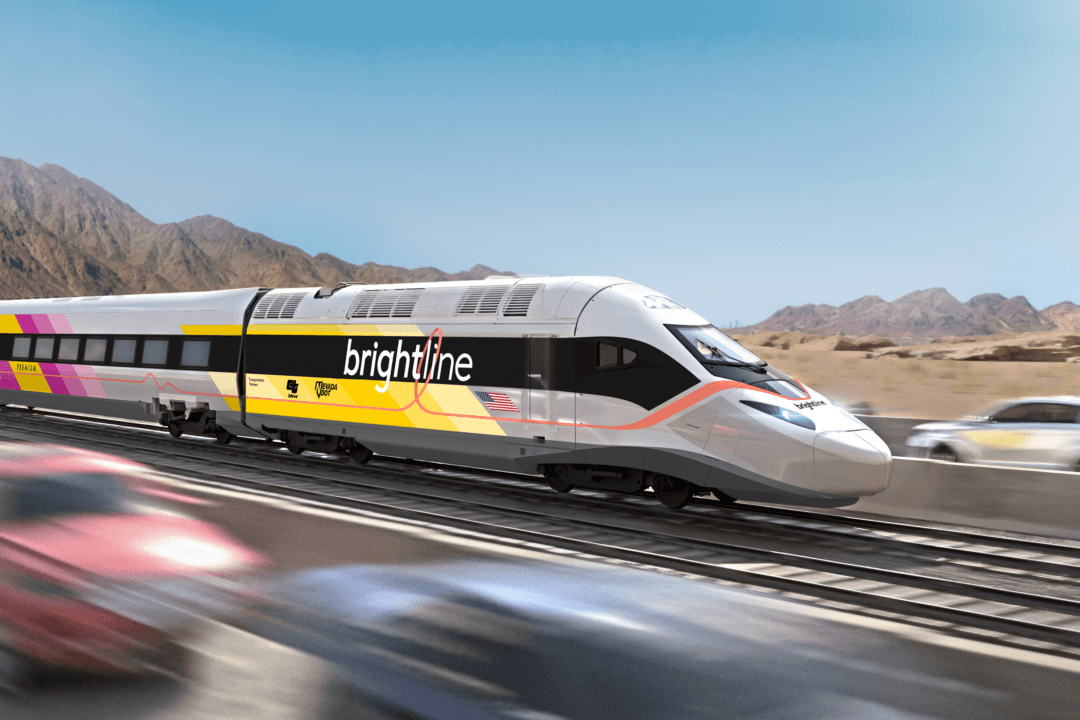California’s High-Speed Rail has now passed all environmental reviews needed to finish the railway connecting the Los Angeles area and San Francisco, a feat officials called historic.
The announcement comes after the rail authority approved the same day the final segment of the railway which connects Palmdale to Burbank.
The 38-mile section will allow passengers to travel from the Antelope Valley to the San Fernando Valley in roughly 17 minutes, at speeds of up to 220 mph, according to the press release.
Chief Executive Officer Brian Kelly said the approval marks a “major milestone” in connecting the two major cities by a three-hour train ride.
“This is a transformative project for the state of California as a whole,” he said in the press release.
The project was subject to the California Environmental Quality Act, requiring local governments and public agencies to evaluate the environmental impacts of projects.
The authority has now cleared 463 miles of high-speed rail from Los Angeles to the Bay Area, as part of what’s called “Phase 1” to build nearly 500 miles of railway. All that awaits is a segment connecting Los Angeles to Anaheim, which should receive clearance by next year, according to the press release.
The contract was awarded to Spain-based TYPSA Group and Los Angeles-based SYSTRA Consulting Inc., according to the press release.
The joint venture between the two companies has built high-speed rail systems in Europe and partnered with rail and transit agencies in California for the last 35 years.
“Getting track and systems design under contract is an important milestone in movement to bring high-speed rail service to California. This approval gets us closer to electrified passenger rail service and putting this transformative project into operations as soon as possible,” Board Chair Tom Richards stated in announcing the plans.
The “state-of-the-art” trains would be capable of speeds up to 220 mph and funded through a federal-state partnership.
The project was approved by voters in 2008 under Proposition 1A, with initial construction estimates of about $33 billion in 2008 dollars to finish the project by 2020.
“The impacts of the COVID-19 pandemic on global supply chains and the resulting market instability and inflation have impacted prices for construction commodities like concrete and steel as well as labor,” Mr. Kelly, the High-Speed Rail Authority’s CEO said in the report.
Nearly quadruple earlier estimates, the higher price tag has led to several calls to stop the project.
A 119-mile section of the Merced to Bakersfield connection has already begun construction and supplied 13,500 construction jobs to mostly Central Valley residents.
Another rail project also received $3 billion in December towards the construction of a track connecting Rancho Cucamonga, about 42 miles east of Los Angeles, and Las Vegas.
U.S. Sen. Catherine Cortez Masto (D-Nev.), who helped secure funds for the Las Vegas rail, said the project will help cut down on traffic and boost the state’s economy.
“Connecting Las Vegas and Southern California by high-speed rail will create tens of thousands of good-paying union jobs, boost our Southern Nevada tourism economy, and finally help us cut down on I-15 traffic,” she said in a December press release.
That project could eliminate 3 million cars from the I-15 each year thereby reducing 400,000 tons of carbon emissions and creating 35,000 union jobs, according to Ms. Cortez Masto.







